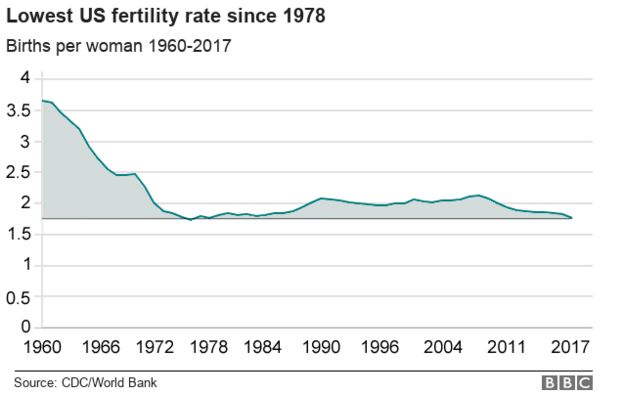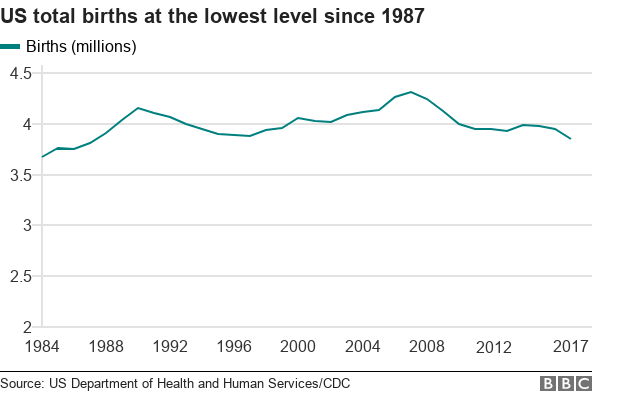
Births in the US have dropped to their lowest rate in 30 years, marking a cultural shift as women delay motherhood, experts say.
Some 3.85 million babies were born in the US in 2017, the fewest since 1987, as births among women in their teens and 20s decreased.
Both the birth rate - the number of births per thousand - and fertility - a lifetime average forecast - fell.
Declining birth rates are common as countries become more developed.
The US fertility rate is lower than the UK's but the US still has a higher fertility rate than many other countries.
While births decreased among younger women in the US last year, it rose in women aged between 40 and 44.
They are similar terms that mean slightly different things.
The birth rate is the number of live births per 1,000 people per year.
The total fertility rate, on the other hand, looks at the average number of children women will have over their lifetimes - how many children a 19-year-old will have, rather than how many she had this year.

The fertility rate has dropped to 1.76 births per woman - the lowest since 1978, the National Centre for Health Statistics said in a report.
Donna Strobino of Johns Hopkins University put the change down to women choosing to delay motherhood in favour of work.
She told AFP news agency: "Women are becoming more educated, they are in the workforce, they are pursuing their careers.
"And in the absence of policies that really help women who are working to really take some time off post-partum you are probably going to see a continuation of this delay."

The US is the only developed nation in the world that does not provide some type of national paid family leave plan to new parents.
Other possible explanations could include changing societal expectations, increased access to contraception, limited provision for parental leave from work, and increased expectations of romantic love.
The rate has been dropped since the post-World War Two "baby boomer" generation was born, and suffered another dip in the recession that started in 2008.
It could mean there are fewer young people in the workforce in the future, at the same time as life spans increase and more elderly people need care and resources into later life.
But it does not mean the population will shrink. It may grow at a slower rate, but there will continue to be more and more people in the US.
William Frey of the Brookings Institute called for some perspective on the figures.
"The country isn't going to run out of people," he said.